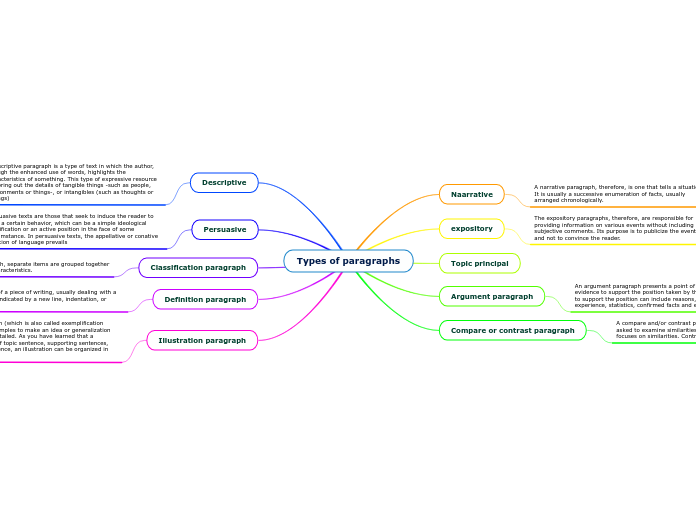
A narrative paragraph, therefore, is one that tells a situation. It is usually a successive enumeration of facts, usually arranged chronologically.
The expository paragraphs, therefore, are responsible for providing information on various events without including subjective comments. Its purpose is to publicize the events, and not to convince the reader.
An argument paragraph presents a point of view, and provides evidence to support the position taken by the writer. Evidence to support the position can include reasons, personal experience, statistics, confirmed facts and expert research.
A compare and/or contrast paragraph is required if you are asked to examine similarities and/or differences. Compare focuses on similarities. Contrast focuses on differences.
A descriptive paragraph is a type of text in which the author, through the enhanced use of words, highlights the characteristics of something. This type of expressive resource can bring out the details of tangible things -such as people, environments or things-, or intangibles (such as thoughts or feelings)
Persuasive texts are those that seek to induce the reader to take a certain behavior, which can be a simple ideological modification or an active position in the face of some circumstance. In persuasive texts, the appellative or conative function of language prevails
In this type of paragraph, separate items are grouped together according to shared characteristics.
A distinct section of a piece of writing, usually dealing with a single theme and indicated by a new line, indentation, or numbering.
Illustration paragraph (which is also called exemplification paragraph) uses examples to make an idea or generalization more specific and detailed. As you have learned that a paragraph consists of topic sentence, supporting sentences, and concluding sentence, an illustration can be organized in this way.